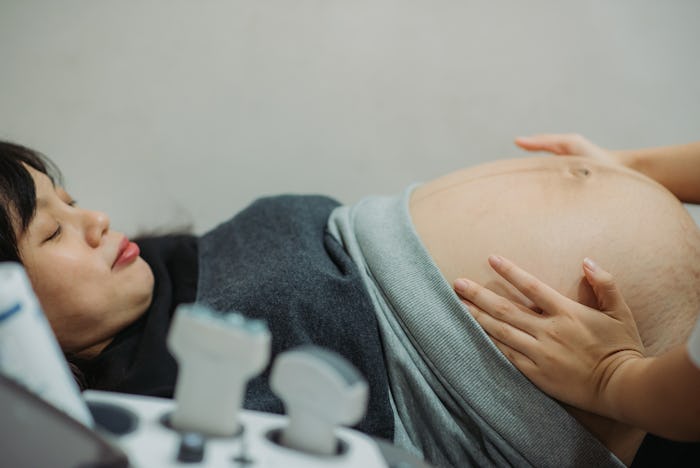Life

What Is Preeclampsia? Plus 3 Ways To Lower Your Risk
When I was pregnant with my daughter, I was one of those “model” patients. I barely gained any weight, I never had any issues, and my blood pressure was a perfect 120/80 at every appointment. I didn’t even bother reading the pamphlets my midwife gave me on hypertension or asked, “What is preeclampsia?” With my health and my checkups going so well, it didn’t seem like information I needed. Until I was about three weeks out from my due date. I gained nearly thirty pounds in a month from retaining fluid and my blood pressure went from a perfect number to hitting 150/100. I was diagnosed with preeclampsia.
If, like me, you never bothered to read up on it, preeclampsia is a pregnancy condition characterized by high blood pressure and protein in your urine. (One of the reasons why you’re peeing in a cup at every appointment.) There are other symptoms such as swelling, sudden weight gain, headaches, and problems with your vision. According to the Preeclampsia Foundation, five to eight percent of pregnancies are affected by the condition and it, along with other hypertensive disorders, is responsible for 76,000 maternal deaths globally per year.
Without proper treatment, preeclampsia can have very serious complications that affect both the mother and the baby. The American Pregnancy Associated noted that a mother can go into liver or renal failure, and experience seizures from the high blood pressure. For your baby, preeclampsia can prevent your placenta from receiving enough blood. Without it, your baby has less oxygen and food, often resulting a low birth weight.
Although the true cause of preeclampsia is unknown, there are a few factors that can increase your risks. According to the American Pregnancy Association, if you are a first-time mom, experienced high blood pressure before pregnancy, or had preeclampsia in a previous pregnancy, you’re at a higher risk for the condition. Other factors like your age (younger than 20 and older than 40), obesity, carrying multiples, or a family history of preeclampsia can affect your chances, too.
The only cure for preeclampsia? Delivery. But this isn’t always a viable option if you’re early in your pregnancy. Some doctors may prescribe antihypertensives, which are medications to lower your blood pressure according to the Mayo Clinic. The Preeclampsia Foundation also noted on their website that an anticonvulsant like magnesium sulfate may be prescribed to lower the risk of seizing.
Because there’s no true cause of preeclampsia and just about anyone can get it, there’s no real guideline on how to prevent it. But the American Pregnancy Association does recommend the following three tips on keeping your risk of being affected by preeclampsia low.
1. Lower Your Salt Intake
Too much sodium means your body holds on to water to try to flush out all of the salt. The Cleveland Clinic notes that, in some, this can cause your blood pressure to rise as the extra water puts pressure on your blood vessels.
2. Avoid Caffeine
Although research hasn’t proven that caffeine can always affect your blood pressure, Mayo Clinic notes that is has the potential, especially if you rarely drink the stuff. Go ahead and limit your intake just to be on the safe side.
3. Elevate Your Feet
While not all swelling is a result of preeclampsia, it can mean you’re on your feet too long and possibly raise your blood pressure, according to Prevention. So do yourself a solid and take lots of rests to prop your feet up.
This article was originally published on